Note: This website was automatically translated, so some terms or nuances may not be completely accurate.
Sauna × Oogiri!? Why Hitachi's Corporate Ad Went Viral on Social Media and in the Press

How should B2B companies, whose faces are rarely seen, communicate with the generation that will shape the future of society? We introduce Hitachi's initiative that answered this "challenge" faced by many companies with the idea of "Sauna × Oogiri."
What was the substance of this project, which used a new approach—eschewing traditional mass and web advertising—to impress upon the public that "Hitachi is a company tackling social issues"? This included the "Sauna for Social Harmony" that appeared in Shibuya, the video "Toto Brain" featuring Vacuum Jessica and Nagisa Shibuya challenging themselves to Oogiri in a sauna, and multifaceted promotion via SNS and PR...
We spoke with the project leaders: Mizuki Wakabayashi from Hitachi, Ltd., Takashi Kishinami, Business Producer at Dentsu Inc., and Ibuki Tokumitsu, Communication Planner.
Why target branding efforts at those in their 20s and 30s?
──Hitachi, Ltd. (hereafter Hitachi) gained attention by opening "Sauna for Society" at Shibuya SAUNAS, a sauna facility in Shibuya, from September 26 to 29, 2024. This initiative offered an experience where participants "confronted a theme" in a sauna. First, could you tell us the background behind launching this initiative?
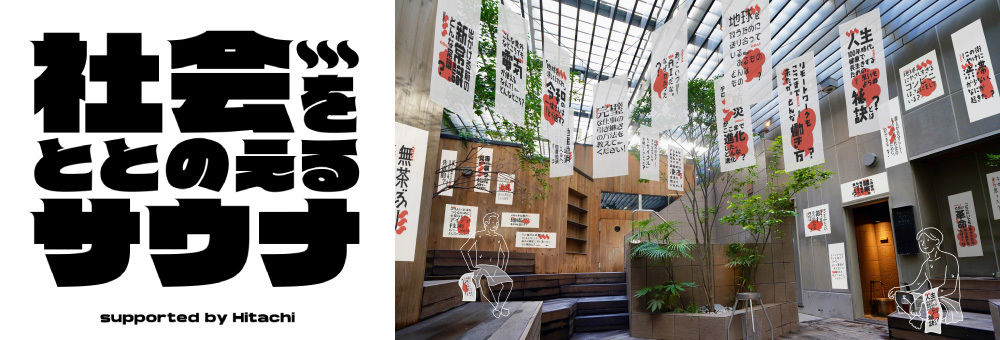
Wakabayashi: We launched this project because we needed communication to help people in their 20s and 30s learn more about Hitachi as a company. As the corporate branding communications manager, I regularly strategize Hitachi's brand communication. While many people perceive Hitachi as an "appliance manufacturer," in reality, 96% of our sales come from businesses outside home appliances. Our business domains are broad—energy, mobility, healthcare, industry—and we globally expand businesses that support daily life and business through digital power.
──When you think of Hitachi, appliances like refrigerators and washing machines come to mind first, but you're involved in such diverse businesses.
Wakabayashi: While the Hitachi name is widely recognized in Japan, despite this awareness, there's limited understanding of "what kind of businesses the company actually operates." From a medium-to-long-term perspective, we believe corporate growth is impossible unless we communicate effectively to the 20s and 30s generation—who will drive next-generation business—and become a partner they naturally consider when launching their own projects. That said, we've never before focused our communications specifically on those in their 20s and 30s. Analyzing their insights and devising an approach presents many challenges... That's why we consulted Dentsu Inc., who possess extensive data and expertise on this target generation.
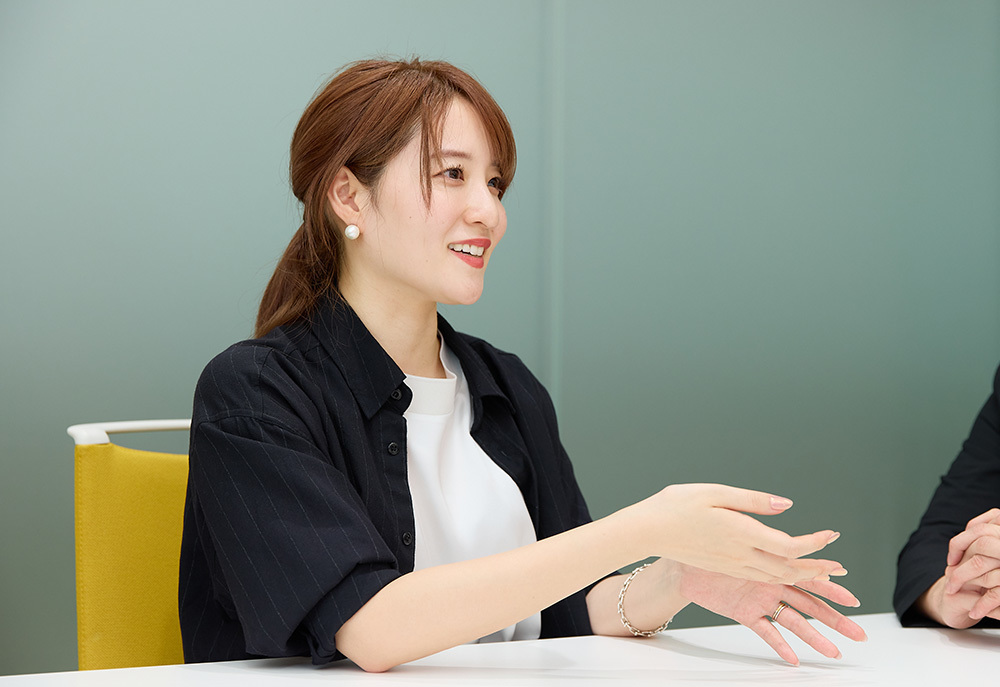
Kishinami: Having just started working with Hitachi, I learned from Mr. Wakabayashi that Hitachi leverages its 110+ years of history in IT, OT (Operational Technology), and products to solve customer and societal challenges through its "Social Innovation Business." You expressed a desire to focus on SNS and PR as your primary communication methods with this target audience.
Wakabayashi: Alongside product advertising, Hitachi has always used commercials and owned media for corporate branding, positioning itself as "Hitachi tackling societal challenges." However, when challenging ourselves to focus communication specifically on the 20s and 30s demographic this time, I thought there might be approaches beyond traditional advertising.
Therefore, during our meetings with Dentsu Inc., I emphasized our desire to shift from "Hitachi Narrative" (our own story) to "Target Narrative" communication. I believed that if we could find points of connection with Hitachi within the context of the target audience's lives and values, they would be more receptive to our messages.
Tokumitsu: Since Mr. Wakabayashi had a clear direction he wanted to pursue, we started by working together to articulate that vision and determine the methods for its output.
――Why did you insist on PR using social media?
Wakabayashi: In recent years, more companies are promoting "solving social issues." But I felt that simply saying "Our XX solution solves social issues" in commercials or owned media would feel familiar to viewers, making it hard to differentiate ourselves from competitors.
Especially this time, since we were targeting a specific age group, I felt there were limits to relying solely on traditional paid media (advertisements companies pay to place). Therefore, to ensure we effectively reached our target audience, I believed initiatives that could gain traction on TV or web news coverage, and communication using social media – which can increase discourse and generate buzz – were indispensable.
Tokumitsu: 30-second commercials and short video production are Dentsu Inc.'s strong suit, and they can certainly deliver a direct message... But we all shared the same concern: we absolutely wanted to avoid ending up with ads that failed to differentiate us from competitors and just got lost in the mix. How to approach this with a truly novel method was a major challenge for us too.
Kishinami: However, once we organized Hitachi's challenges and objectives and moved to actual output, we grappled intensely with how to strategically translate this into creative work...
Tokumitsu: Exactly. While there are various PR methods using social media, the core question was how to use those tools to effectively convey the message: "Hitachi is a company that has been solving social issues since its founding." That was the first major hurdle our team hit.
A Sauna Comedy Contest!? Hitachi: The Company That "Organizes Society"
――I imagine it was truly a labor of love. Amidst that, how did the idea of "Sauna × Oogiri" come about?
Kishinami: I think the first breakthrough moment was definitely when the catchphrase "Tuning Society" was born. What do you think?
Wakabayashi: Yes, that's right.
Tokumitsu: On this project, besides BP's Kishinami and myself as the Strategic Planner handling the overall integrated communication plan, we also worked with a creative team including an Art Director and Copywriter. The concept copy that emerged from this creative team was "Tuning Society." "Tuning" also tied into the sauna boom among young people, and I think that was the moment the major pillar of this project was born.
Wakabayashi: If we directly conveyed the core message "Hitachi has been solving social issues since its founding," that would be within the "Hitachi narrative" context. But shifting it to "Solving social issues → Harmonizing society" instantly transforms it into a "target narrative" closely aligned with young people's lifestyles. Once this concept emerged, we immediately moved forward with planning the sauna event. However, I felt that if we only executed this single event, it would only reach the limited audience of "sauna enthusiasts" and wouldn't spread further. So, we returned to our initial goal of increasing social media conversations to generate buzz. The team also contributed various ideas for leveraging social media communication.
Tokumitsu: For me, this was another breakthrough point. When aiming to generate buzz via social media, entertainment value becomes essential. We brainstormed within the team about how to add that entertainment value to the core message: "Hitachi has been solving social issues since its founding."
Wakabayashi: With video production as our chosen medium, we agonized over how to create creative content that would resonate with our target audience. Amidst this, someone proposed the idea of turning the very social issues Hitachi addresses into "challenges" – rather than directly promoting Hitachi's businesses or solutions. That's when I knew we had it.
Kishinami: Exactly. Turning social issues into challenges and turning it into entertainment through a comedy contest—finding this framework allowed us to break through yet another wall we were facing. As a result, the image of a sauna full of challenges emerged, and I think it tied in well with the overall concept.
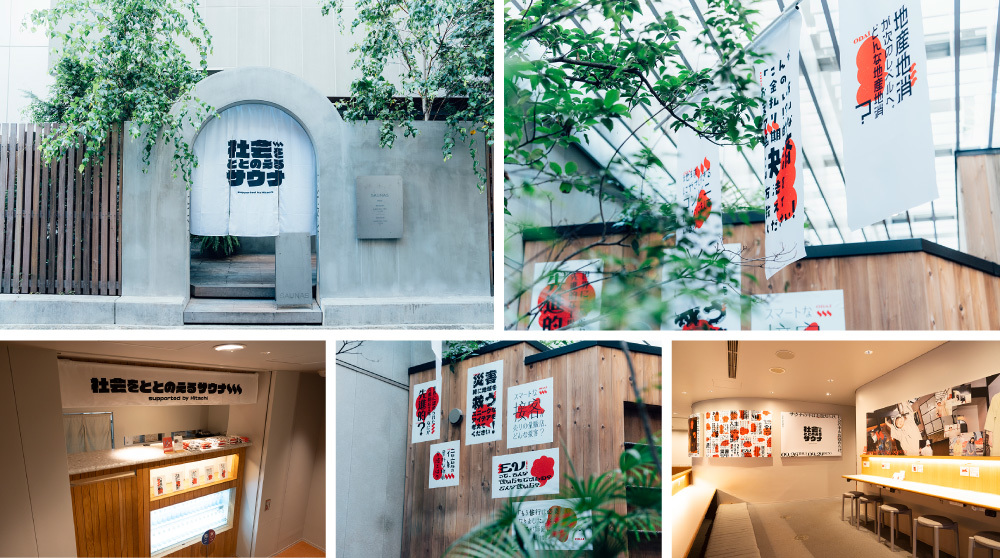

The concept: "How can we let people know about Hitachi without actually saying 'Hitachi'?"
──Alongside "Sauna for Society," the video "Toto Brain" featuring Vacuum Jessica and Nagisa Shibuya also became a hot topic.
Wakabayashi: The video features the two members of Shinkuu Jessica and Nagisa Shibuya visiting the "Toto Brain" sauna, where challenges are continuously presented, and they engage in a comedy quiz.
〈Shibuya Nagisa Edition〉

〈Shinkuu Jessica Edition〉

Tokumitsu: For production, we decided to commission broadcast writers specifically to create this as content, not just as an advertisement. That's why the improv comedy segment is "real deal." For filming, we only gave the two members of Shinkuu Jessica and Nagisa Shibuya the video's general outline; we didn't prepare any answers for the improv comedy.
──So it was completely improvised without a script?
Kishinami: That's right. We left it entirely up to them how to respond to the prompts. It was a new approach, different from traditional corporate ads.
Wakabayashi: We were all nervous right up until filming started (laughs). It was a one-shot deal with no retakes. It was scary, but also fun.
Tokumitsu: But the editing after filming was incredibly tough, right? It couldn't just be funny; it had to fit properly within an advertising context. For me, that was the biggest hurdle in this project.
Kishinami: After filming, we spent a whole month editing while discussing it together.
Tokumitsu: It wasn't just about making the video go viral. Hitachi is a company solving social issues, so it had to convey what they actually do. It was tough balancing highlighting the interesting parts of the footage while weaving in Hitachi's message... Working with the broadcast writer team, we created an ad unlike any before – it felt like we were working without a textbook.
The final video ended up being about 17 minutes long. Through trial and error, we shifted our thinking to "how can we get people to understand Hitachi without directly talking about Hitachi?" As a result, the first 13 minutes feature Jessica and Shibuya freely answering prompts in the sauna, while the last 4 minutes convey Hitachi's message.
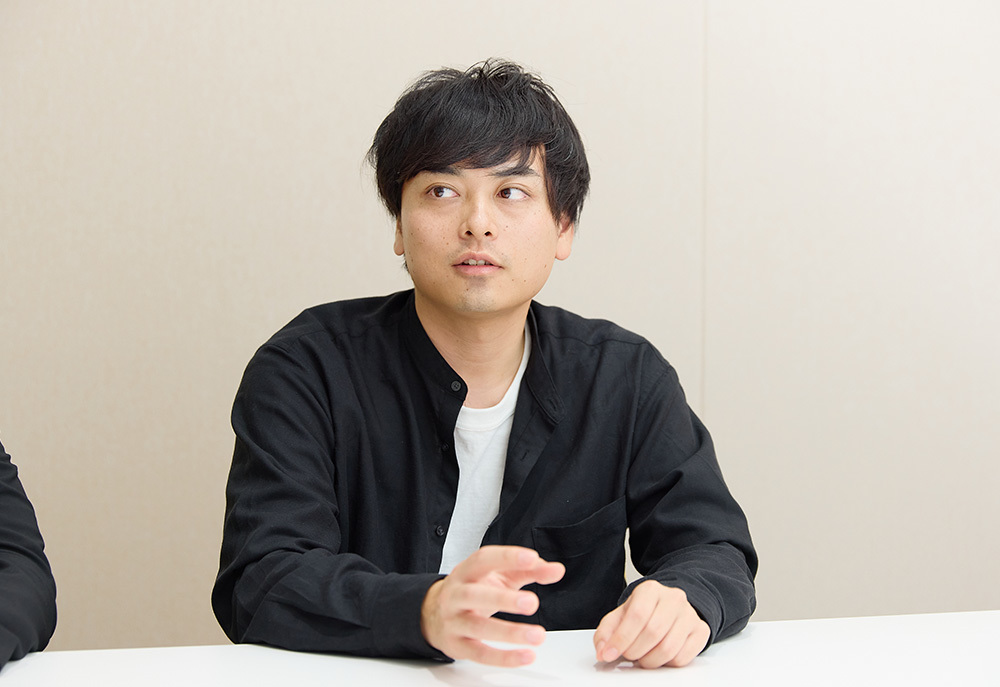
──Besides the sauna event and video, what other initiatives did you implement?
Wakabayashi: When promoting the sauna event to media, we had Nagisa Shibuya serve as ambassador. For the sauna preview event, we engaged influencers to post on social media and also shared content on our own web media and social channels. Event PR targeted both entertainment and business outlets.
For entertainment media, we had Ms. Shibuya answer a theme-based question about social issues Hitachi addresses during a press conference using a humorous quiz format. This aimed to reinforce the impression that "Hitachi = a company tackling social issues." For business media, our PR team took the lead in issuing news releases and explaining the concept behind "Why Hitachi and a sauna?" using the preview event. This resulted in coverage across various TV and web media outlets. The entertainment PR aimed to generate buzz on social media, primarily among fans, while the business PR targeted audiences who regularly follow business news. Both approaches generated significant reactions.
A key success factor was our team of peers who shared the same culture
──You pursued a strategy that didn't rely on traditional mass advertising, instead using the sauna event, videos, SNS, and PR. How was the response to the project?
Wakabayashi: Participants shared feedback like, "I learned for the first time that Hitachi tackles many social issues, which made me view them more favorably," and "I thought they were a stiff company, but their flexible approach to communication changed my image."
Tokumitsu: From those who watched the video, we got comments like, "I started watching thinking it was interesting content, and was surprised it was a Hitachi ad." It felt like people weren't reacting negatively with "Oh, it's just an ad," but rather positively with "Huh? This is an ad!" We aimed for ads that would be received favorably, so that was very gratifying.
Kishinami: I felt our intended message truly resonated, and I was genuinely delighted by the video comments. It also became a hot topic on social media. While advertising fundamentally focuses on "communicating," this experience reaffirmed the importance of creating communication that "naturally conveys" the message.
Tokumitsu: Designing communication for earned media like social networks requires more consideration than mass advertising about how users will react to initiatives, making it seem more roundabout. However, approaches like this sauna event and video—creating content and spaces that many people find interesting, and ultimately connecting that to advertising—will likely become increasingly important going forward.
──This project showed us a new form of communication between B2B companies and consumers. Beyond the specific initiatives, what other factors contributed to its success?
Kishinami: It wasn't just "client versus Dentsu Inc.;" we planned and executed the project as one team. As we started the project and developed the plan, with Mr. Tokumitsu leading the way to organize the challenges, a natural team spirit emerged where everyone freely shared their opinions without reservation.
Wakabayashi: Exactly. It wasn't the typical style where Hitachi gives an orientation and Dentsu Inc. makes proposals. We built it together from the very beginning, so everyone could tackle it with the same level of passion.
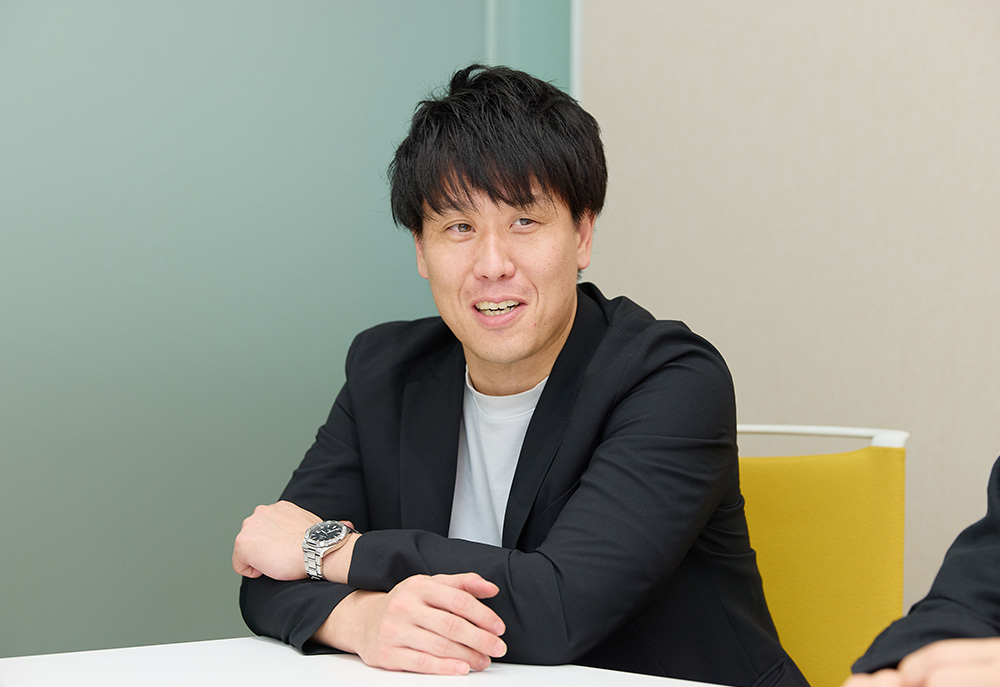
Wakabayashi: Deciding on the "Sauna × Oogiri" concept and planning the video was challenging, but thanks to our repeated discussions, we built trust with both of you early on. I truly believed it would turn out great in the end, and I think it did.
Tokumitsu: Thank you. As a campaign planner, this was full of first-time challenges: "Communication between a B2B company and consumers," "Targeting a specific demographic of 20s-30s," "Avoiding reliance on mass or web ads," and "Producing a video lasting about 17 minutes."
Wakabayashi: For me too, it was all new territory. Whenever I got stuck in the planning, I made a point of returning to the core message we wanted to convey through this project: "For over 110 years since its founding, Hitachi has been a company solving societal challenges."
Tokumitsu: Another key factor in the project's success was that all three of us—Wakabayashi, Kishinami, and myself—were of the same generation as the target audience. We valued that sense of "understanding precisely because we're from the same generation" and actively sought points of connection with our target demographic.
Kishinami: Indeed, being of the same generation while advancing the project was likely a major success factor.
Tokumitsu: For example, in talent selection, typical advertising production involves persuading clients by presenting "numbers" like target audience recognition rates or favorability. But you can't judge everything by numbers alone. I believe you can't create good creative work unless you judge "whether people will be moved" with a sense of reality and intuition. This time, we didn't get bogged down by "numbers" alone. We valued the gut feeling among our project members – "This person would resonate with the audience" – and made quick decisions.
Wakabayashi: When the idea for the comedy segment came up, the two members of Shinkuu Jessica immediately popped into my head (laughs). Of course, we logically fleshed out the entire plan, but because we could share this kind of intuitive feeling within the team, I think we were able to move forward together, all facing the same direction, right to the end.
Tokumitsu: Going beyond the client-ad agency relationship and becoming one team made the project incredibly enjoyable for me personally. I think that enjoyment really came through in the campaign's ideas and content.
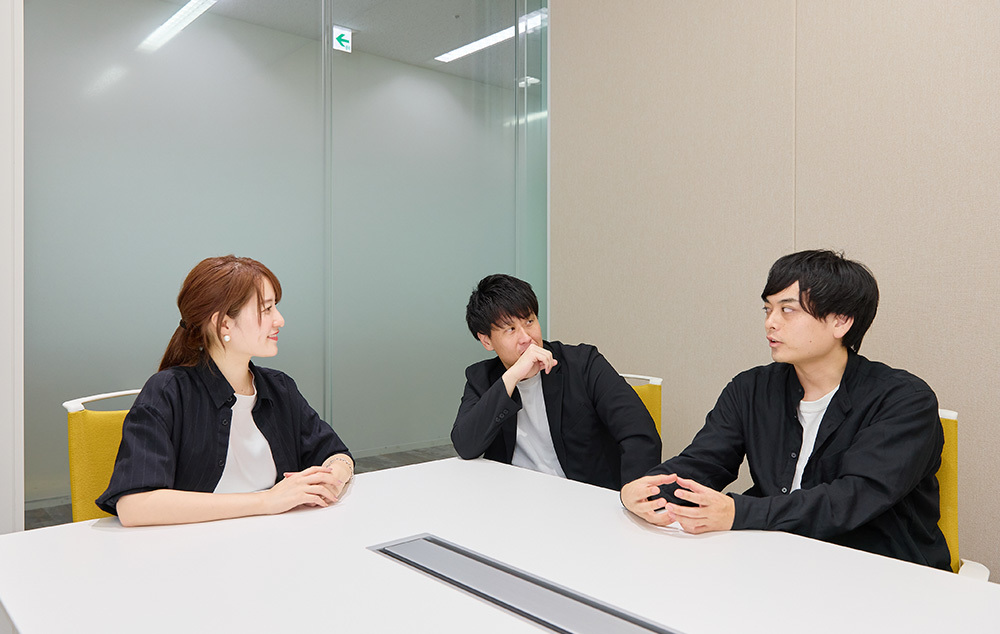
──What challenges do you want to take on next?
Wakabayashi: It's crucial to make Hitachi known to the next generation, so we'll continue focusing on that. Additionally, since over half of Hitachi's sales and employees are outside Japan, I believe strengthening corporate branding on a global scale is necessary.
This project made me realize the impact of leveraging multimedia. I want to apply this experience to initiatives that enhance Hitachi's brand recognition globally, including in Japan.
Kishinami: Communication targeting those in their 20s and 30s will remain necessary. This project was a first for Hitachi, offering novelty and achieving success. While a second installment would present higher hurdles, I definitely want to continue supporting Hitachi's business growth.
Tokumitsu: Experiencing this project made me keenly aware of the potential for communication between companies and consumers. Moving forward, I want to create ads and campaigns that effectively convey messages even to targets outside my own generation.
──Hearing your insights today made me realize the potential for communication beyond mass media and web advertising. Thank you for your time.
Was this article helpful?
Newsletter registration is here
We select and publish important news every day
For inquiries about this article
Author

Mizuki Wakabayashi
Hitachi, Ltd.
Global Brand Communications Division Corporate Digital Communications Department Content & Promotion Group
Chief
After joining Hitachi as a new graduate, I worked in HR planning and implementing systems and initiatives related to people and organizations. In 2022, I transferred to my current department through a group-wide open recruitment process and took charge of corporate branding. With experience in TV commercial production and owned media operations, I now lead the "Organizing Society" campaign.

Takashi Kishinami
Dentsu Inc.
Business Producers Division 14
Business Producer
After handling the Fuji Television Network for five years in the Media Services / Radio,TV Division 3, I transferred to the BP Bureau in 2022. Beyond mass media communications, I am currently challenging myself to produce various corporate and business activities to enhance our clients' corporate value.
Articles by this person

Tokumitsu Ichifuki
Dentsu Inc.
Marketing Division 3
Communication Planner
A planner specializing in neutral planning that centers on strategic thinking without prescribing output formats. An omnivorous professional committed to all areas: strategy formulation, planning, production, media planning, owned media and PR communication design, research, and PDCA cycles. Awards include: Dentsu Inc. Advertising Award Gold Prize, ACC Silver, CCN Grand Prize, and Sales Promotion Competition Gold.

